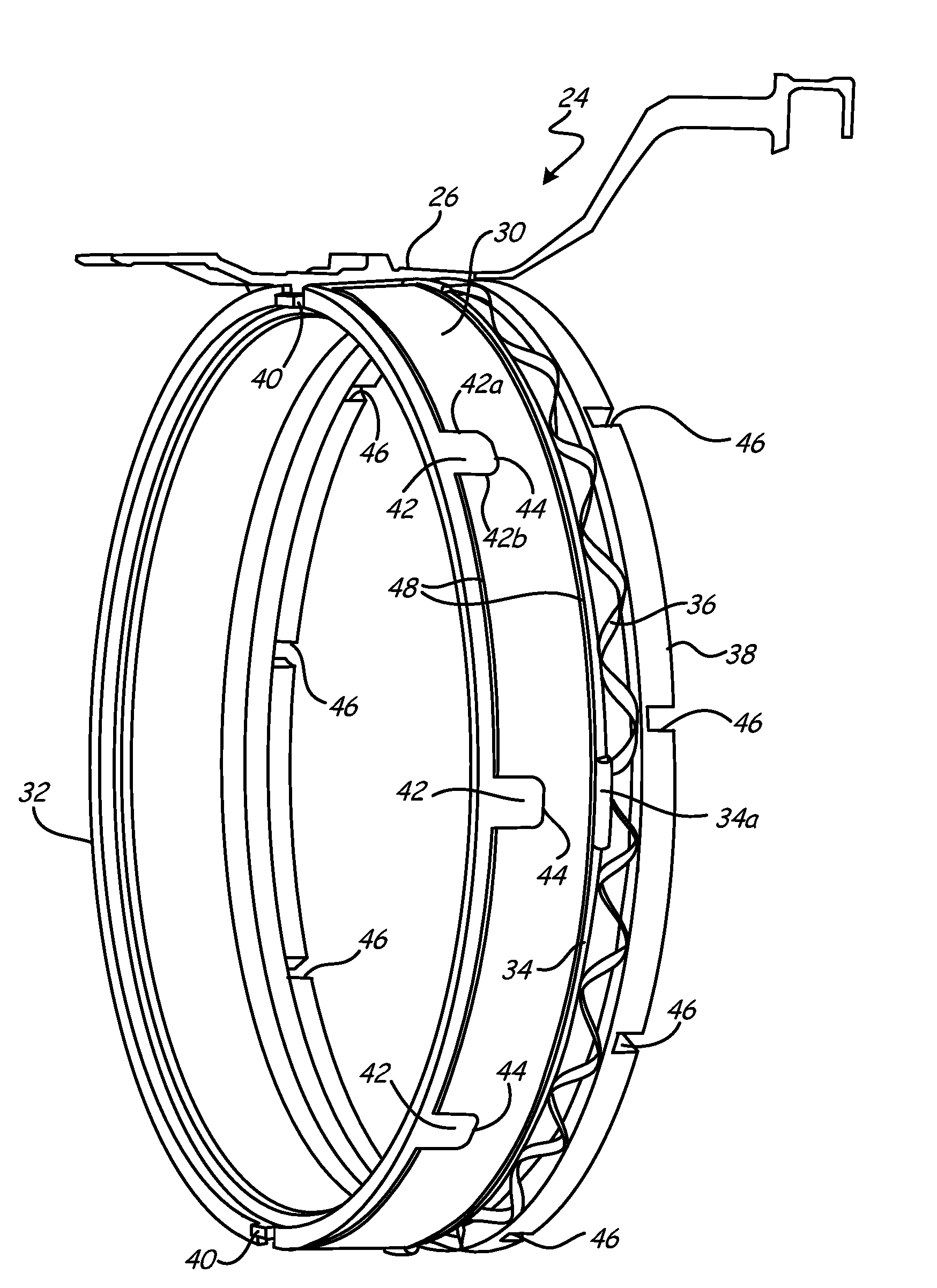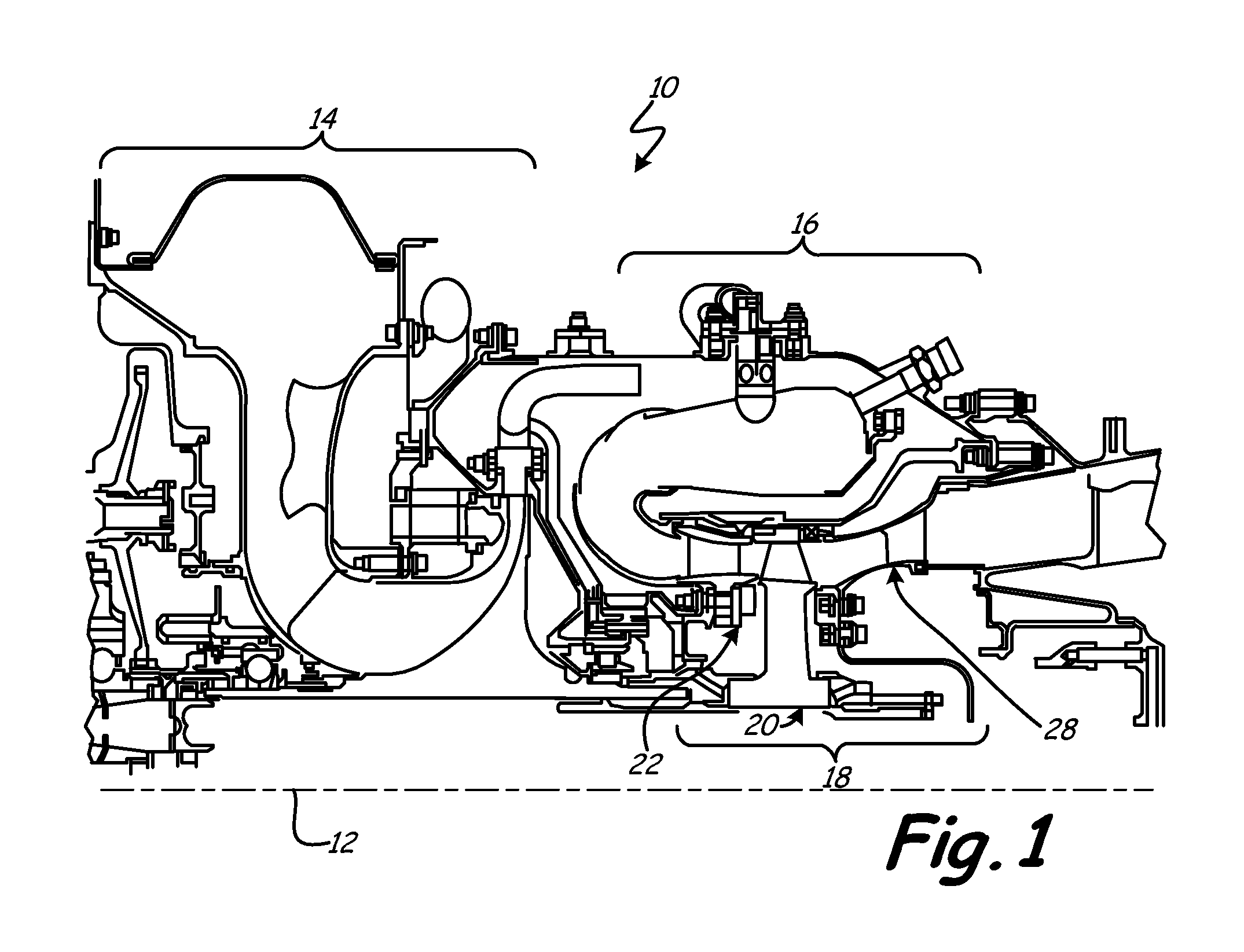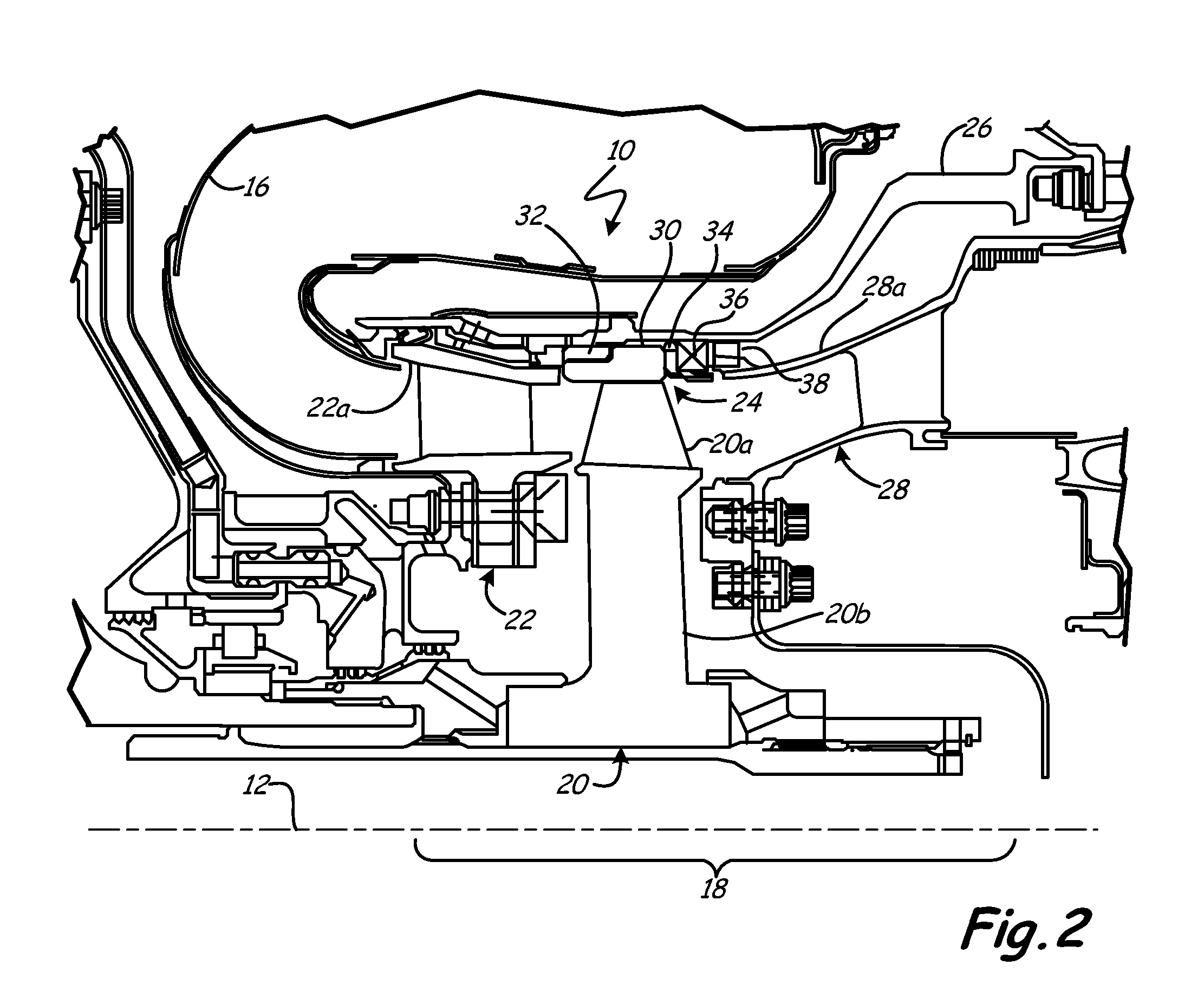Ceramic turbine shroud support
a ceramic turbine and shroud support technology, applied in the direction of machines/engines, stators, liquid fuel engines, etc., can solve the problems of low thermal expansion of ceramics that make up the blades and ibrs, exacerbate the issue further, and reduce the performance of engines, reducing the effect of useful energy not being harnessed
- Summary
- Abstract
- Description
- Claims
- Application Information
AI Technical Summary
Problems solved by technology
Method used
Image
Examples
Embodiment Construction
FIG. 1 is an axial cross-section of gas turbine engine 10 including engine axis 12, compressor 14, combustor 16, and turbine 18. A working medium fluid, such as air, is pulled into the front of engine 10 by, for example, a fan (not shown) and directed into compressor 14. The air stream is successively compressed through stages of compressor 14 and directed into combustor 16. In combustor 16, the air stream is mixed with fuel and ignited. The air and fuel mixture ignited in combustor section 16 is directed into turbine 18 in which the mixture is successively expanded through alternating stages of turbine rotors, such as rotor 20 and stators, such as stator 22. A portion of the gas and fuel mixture leaving combustor 16 acts to rotate turbine 18, which powers compressor 14. The remaining portion of the gas and fuel mixture passing through turbine 18 exits the back of engine 10 to provide thrust for engine 10.
FIG. 2 is a detail section view of gas turbine engine 10 including rotor 20, s...
PUM
| Property | Measurement | Unit |
|---|---|---|
| resilient | aaaaa | aaaaa |
| soft | aaaaa | aaaaa |
| thrust | aaaaa | aaaaa |
Abstract
Description
Claims
Application Information
 Login to View More
Login to View More - R&D
- Intellectual Property
- Life Sciences
- Materials
- Tech Scout
- Unparalleled Data Quality
- Higher Quality Content
- 60% Fewer Hallucinations
Browse by: Latest US Patents, China's latest patents, Technical Efficacy Thesaurus, Application Domain, Technology Topic, Popular Technical Reports.
© 2025 PatSnap. All rights reserved.Legal|Privacy policy|Modern Slavery Act Transparency Statement|Sitemap|About US| Contact US: help@patsnap.com



